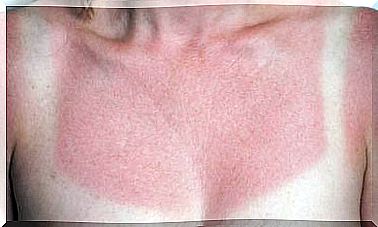What To Do In Case Of Suffocation Or Suffocation: Heimlich Maneuver
It may be that you have been through this at some point, or that this situation has never happened to you before. In either case, it’s no big deal to know a technique that can save lives. Today we will talk about the Heimlich maneuver.
Suffocation (or suffocation) is more common than we think; a piece of food or an object can choke on our airways and suffocate us little by little.
It is a terrible feeling, both for those who experience it and for those who witness it, and it can be worse if, for example, it happens to a small child.
That’s why today we will offer this simple information where, by means of some basic rules, it is possible to save a life.
1. Identify the type of suffocation
- Partial obstruction: if we observe that the person makes sounds and coughs, for example, this is a positive sign. It means your airway is not completely clogged. Coughing is a defense mechanism to expel food or objects, so we should encourage the person to continue coughing. If we can see what is obstructing our breathing, we can extract it using our thumb and index finger.
- Even if the situation starts with a partial suffocation, we must be careful that the obstruction does not become total. If you are a child under the age of one, it is worth remembering that the mere fact that she is crying and coughing is a good sign.
- Total Obstruction: The person makes no sound but is aware. He is unable to cough because the object in question completely blocks his airway. At this point, we must apply the Heimlich Maneuver.
2. Heimlich maneuver in adults or children older than 1 year

Remember, we will only initiate the Heimlich maneuver if the person in question (or child over 1 year) cannot cough, speak, scream, and therefore breathe.
If we don’t provide immediate help, the person will eventually lose consciousness, so it’s important to act quickly and remain calm so that we’re sure of what we’re doing. It’s a simple maneuver:
- Position yourself behind the person, but a little to the side, that is, if you are right-handed, stay a little more to the left and if you are left-handed, keep to your right;
- Then, wrap one hand around the person’s chest and tilt the adult or child forward a little, so that the object obstructing the throat moves towards the mouth, that is, forward, never inward;
- At this point, start by giving 5 dry blows between the shoulder blade of the suffocated person, do it with the part of the hand located between the palm and the wrist;
- After each hit, note whether the object has finally come out;
- If the blockage continues and the person cannot breathe, give 5 compressions to the abdomen: close your fist and place it over the person’s navel in the pit of the stomach. With the other hand open over the hand that is at the navel, press the stomach backwards, with dry and brusque movements. Repeat the operation until the object in question comes out of the mouth (attention: do not perform this action on pregnant women and children under 1 year old, or with obese people);
- If the person’s airway remains closed after three cycles of squeezing and three blows to the shoulder blades, call an ambulance. Never leave the person alone, keep applying the Heimlich maneuver.
Suffocation in children under 1 year
- If you notice that the child is not crying or coughing, quickly place him on his stomach along your forearm or on your thigh, with his head down and support his head;
- Give the child 5 firm blows on the back with the part of the hand between the palm and wrist. Look inside your mouth and remove any obstructions that are visible. Never insert your fingers into the baby’s mouth unless you can see and reach the object, as this could push it further in and make suffocation worse.
- If the airway is still blocked, apply up to five chest compressions (turn around the child and squeeze his chest with your fingers). After each compression, see if the suffocation has passed.
As you can see, the technique is very simple, just keep calm and apply it safely.
She’s always effective, so it’s worth getting to know her to know how to act and, who knows, save a life.









